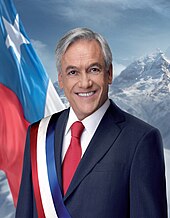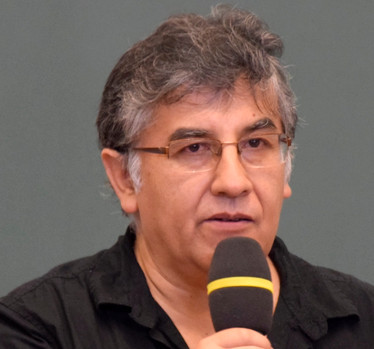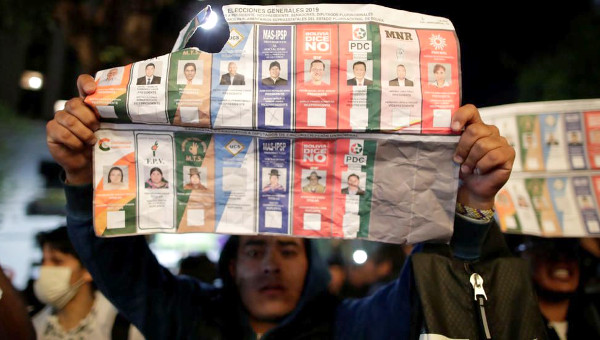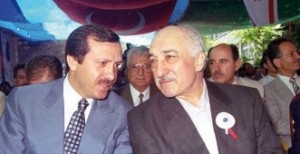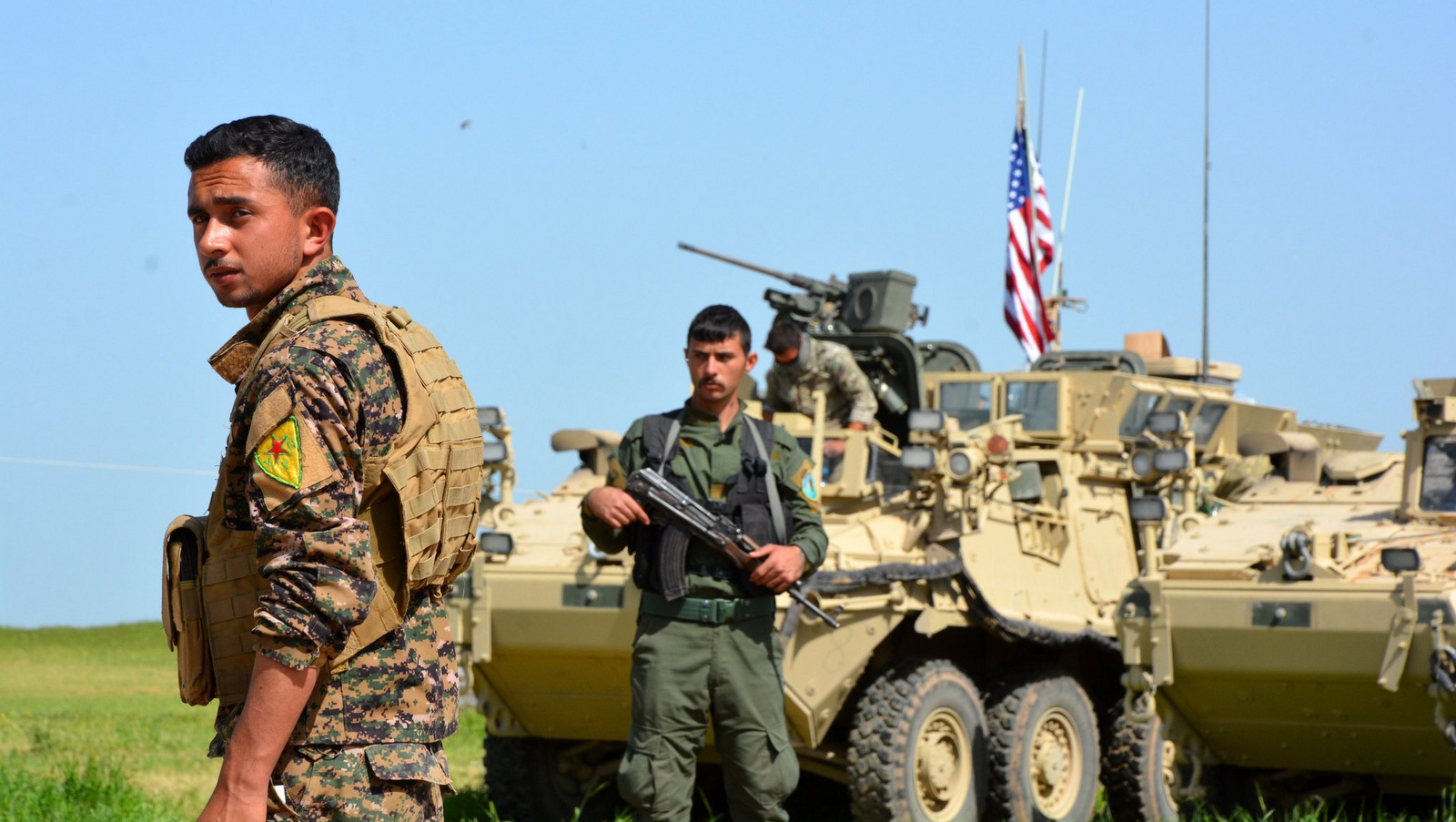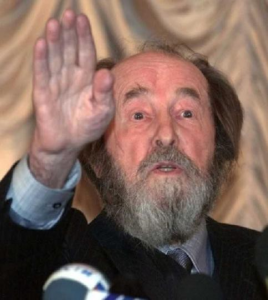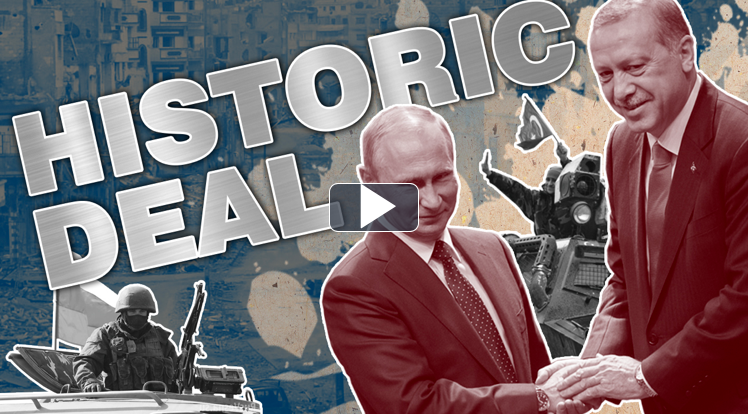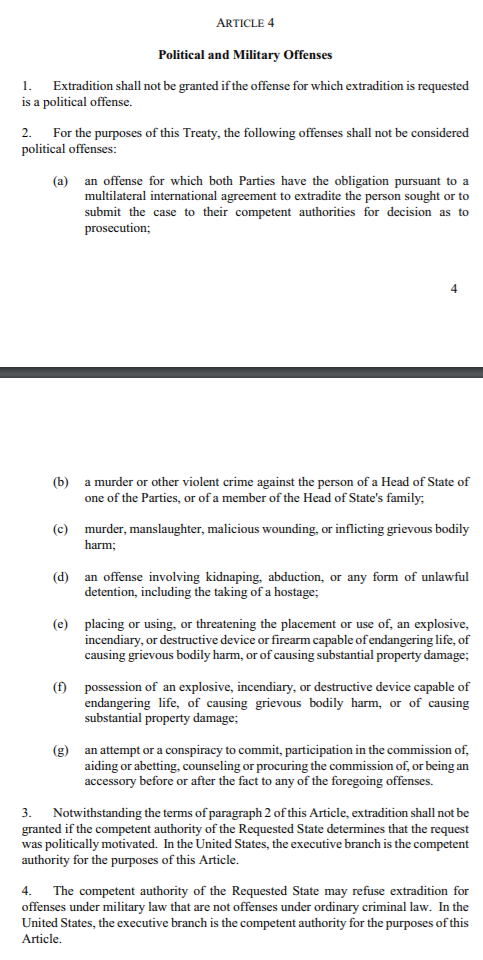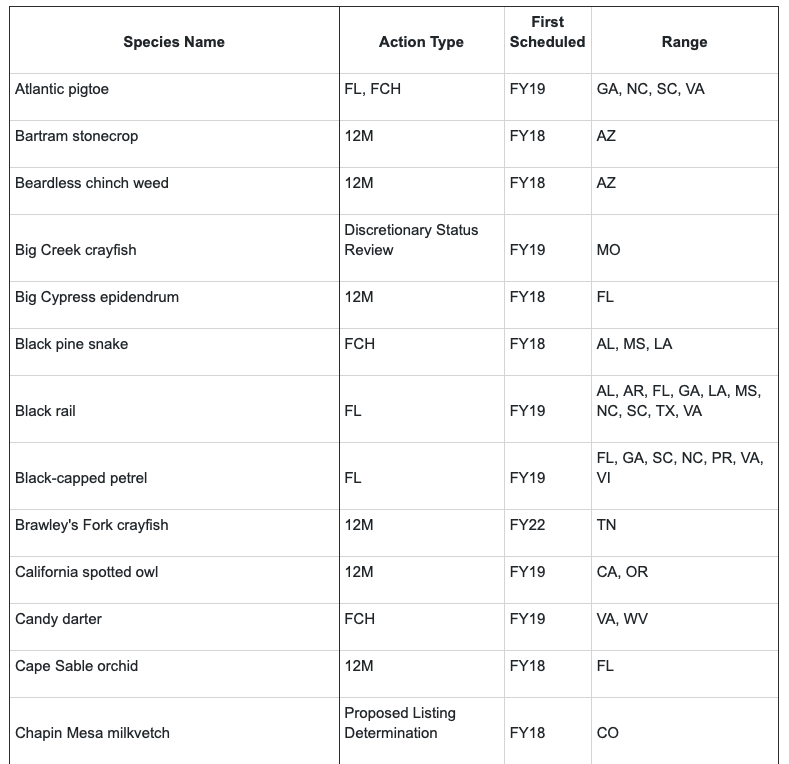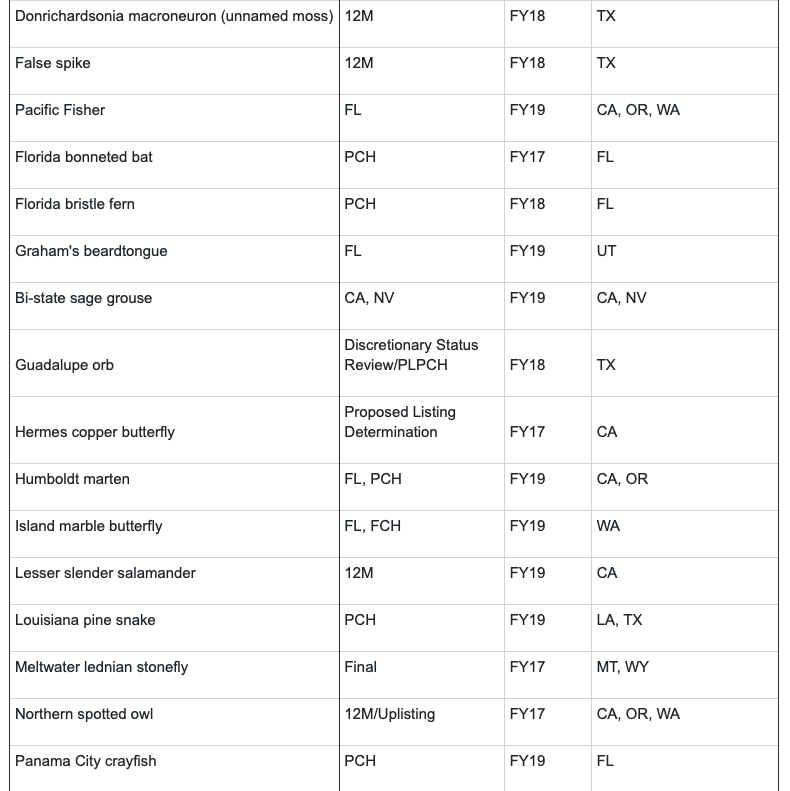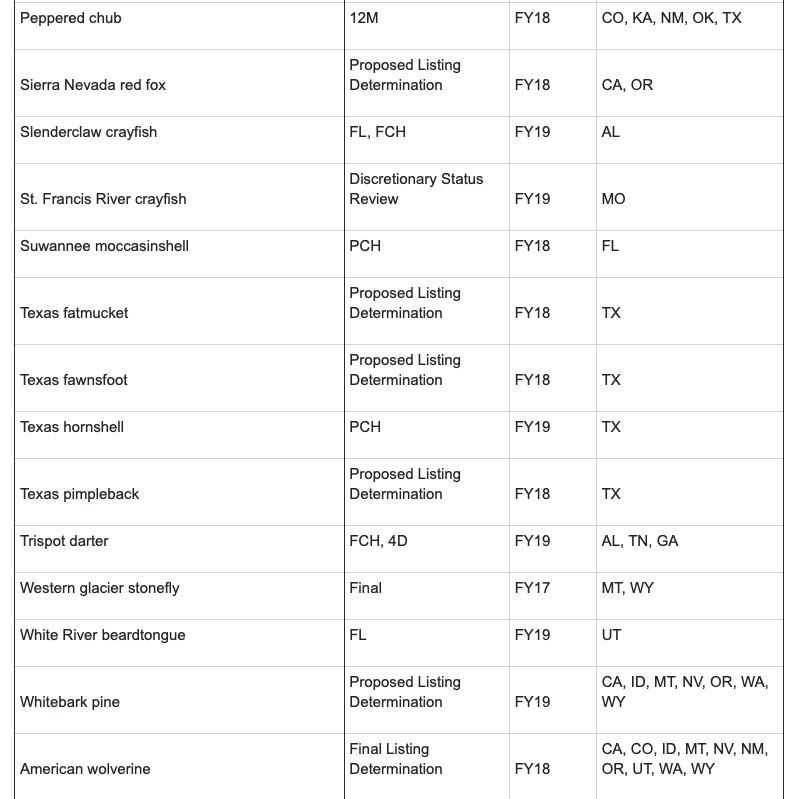- Western insanity: the materialist-reductionist paradigm
Any intelligent fool can make things bigger, more complex, and more violent. It takes a touch of genius – and a lot of courage – to move in the opposite direction ― E.F. Schumacher
The Western world is insane. It suffers from a persistent delusion called the materialist-reductionist paradigm. We learned this from the Greek philosophers who preferred to look at objects in isolation: nature, for example, was defined as the universe minus human beings and their culture.[i] They divided the world into parts assumed to be static and unchanging, and categorized the parts according to their attributes (solidity, whiteness, etc.). We are socialized as children to learn the names and categories of things and psychologists have confirmed that Westerners tend to focus on discrete objects (a left-brain emphasis), while Easterners tend to focus on relationships (a right-brain emphasis).[ii]
The intellectual approach to perception was alien to Chinese philosophers, who perceived the world as a mass of substances rather than a collection of discrete objects.[iii] Their universe was a continuous medium or matrix within which interactions of things took place, not by the clash of atoms, but by radiating influences.[iv] Quantum physics tends to confirm this view of the universe, suggesting, for example, that particles can behave like waves and can remain connected even when separated over large distances.[v]
Taoism exemplifies the holistic view: objects and events are embedded in a meaningful whole in which yin contains yang and yang contains yin in an ongoing cycle of change, giving rise to a “both/and” orientation.[vi] By contrast, the Aristotelian law of non-contradiction favoured in the West gives rise to an “either/or” orientation.[vii] Quantum physics and fuzzy or multivalent logic challenge Aristotelian binary logic and imply that the view of the universe expounded by Eastern mystics may be a more accurate representation of reality.[viii]
The difference is illustrated by contrasting the ideas of traditional Chinese medicine with those of Western medicine. The latter focuses on the parts of the body and treats problems in isolation, whereas traditional Chinese medicine considers the body to be influenced by its context (lifestyle, current activities, food intake, environment and seasons) and all its parts to be interrelated. While Westerners readily see themselves as a machine, Japanese see themselves as deriving from nature, analogous to a plant.[ix]
Notions of an organic, living and spiritual universe were largely eradicated in the 17th century by Newton’s conception of a mechanistic universe. Europeans welcomed the Scientific Revolution as evidence of progress, a concept that arises from the Christian notion of rectilinear time. In Christianity, time appears to run in a straight line from the Creation, by way of the Fall of Man and the Revelation, to the Last Judgment.[x] Since time was seen as a line moving forward towards salvation, it entailed a belief in progress being made over the course of time.
Spirituality in the West was finally extinguished by René Descartes, who pronounced that mind and body are separate, which was readily accepted by Christians already primed with dualistic notions of the Bible such as heaven and hell, good and evil, God and Satan. Descartes’ famous dictum of “I think, therefore I am” completed the schism in the West between the head and the heart and made the individual ascendant. The Bible having already granted him dominion over the animals, Western man could now believe that he was separate from his environment. He saw himself as contributing to human progress and acting both rationally and morally in exploiting his environment for his own individual profit, heedless of the consequences for others who shared it. He was as cut off from his environment as he was from the emotions that informed his thoughts. As a result, interest in spirituality was largely extinguished for several centuries in the West, while rationality reigned supreme, such that labelling an idea “Illogical” was to condemn it out of hand. The way of thinking about the world that developed between 1500 and 1700 has dominated Western culture for the past 300 years.[xi]
Physicist Wallace Thornhill is challenging the left-brain view. He believes that we don’t understand the world by putting it together bit by bit, suggesting that the method used at the Large Hadron Collider is like smashing countless jumbo jets into mountains and picking over the debris to see how they fly. The machine metaphor reduces things to isolated bits and loses sight of the connected whole: stars and galaxies are isolated objects; we are isolated individuals. Thornhill compares the modern academy to the universities of the 16th and 17th centuries that conformed to the Church and to Aristotle’s text. He accuses modern science of ignoring or suppressing counter-arguments and sanitizing the history of science to give the impression of progress.[xii]
The materialist-reductionist paradigm has run its course. The world is undergoing a new period of enlightenment that is changing our understanding of everything and vindicating what Chinese mysticism has taught for thousands of years. Everything isconnected and we are not isolated from nature but are a part of, and interact with it. Modern scientific gatekeepers are like King Canute, struggling to turn back the tide, which has definitively turned against their scientific orthodoxy to threaten their dominance, prestige and power.
It is a dangerous time to be alive, for those who wield power remain wedded to the fear-generating paranoia of the materialist-reductionist paradigm: everything is material, scarce, perishable and limited. Life is inevitably nasty, brutal and short, and only the fittest, i.e. the most ruthless, survive. Neoliberal economics is the apotheosis of this thinking. Heavily influenced by Plato, the University of Chicago philosopher Leo Strauss taught his students to go out and rule the world using any means necessary, chiefly deception.[xiii] They promptly did so, authoring the Project for the New American Century and orchestrating the post-9/11 collapse of the rule of law. Like Nietzsche, Strauss believed that the history of Western civilization had led to the triumph of the inferior, the rabble. Strauss’s sick mind is largely responsible for the banalization of evil over the last 18 years.[xiv]
Physicist David Bohm believed that our almost universal tendency to fragment the world and ignore the dynamic interconnectedness of all things is responsible for many of our problems. He argued passionately that our current way of fragmenting the world into parts not only doesn’t work, but may even lead to our extinction.[xv] How prescient he was! Just a few decades later here we are, standing at the brink of our own destruction by 5G technologies.
- Is Western insanity exacerbated by electromagnetic radiation?
The day science begins to study non-physical phenomena, it will make more progress in one decade than in all the previous centuries of its existence ― Nikola Tesla
Modern science blindly continues to prop up an increasingly indefensible Newtonian model of a material universe and demeans the efforts of open-minded scientists who are providing ever more data to support Nikola Tesla’s assertion that the universe can be understood only in terms of energy, frequency and vibration.
While materialists continue to assert that consciousness is a function of the brain, a consensus is building that the ancient worldviewof consciousness beingactually the source rather than an epiphenomenon of matter was correct. “The ‘hard problem’ of consciousness is the result of a category mistake. We have been trying to reduce consciousness to physical properties when it is consciousness that is the more comprehensive category, and it is only in terms of consciousness that physical properties themselves can be understood.”[xvi] Bruce Lipton compares the brain to a television set: whether or not the set is functional and can pick it up, the signal is always there.[xvii] For Anthony Peake, that signal is the real reality around us – what he calls the “Bohmian IMAX” – and the brain is an attenuator that reduces and processes this fizzing and buzzing mass of electromagnetic energy to enable us to make sense of it. People who believe that what they perceive through their senses is exactly what is happening “out there” he calls “literalists”. Certain individuals have a malfunctioning attenuator that causes them to perceive the Bohmian IMAX in all its glory, resulting in a diagnosis of schizophrenia, severe autism or Asperger’s syndrome.[xviii]
We are all taught that everything is made of atoms and molecules, which we know are not solid. We should by now all understand that when we think we touch something, we are simply meeting the electromagnetic field created by electron repulsion. However, because we are nevertheless browbeaten into believing that everything is matter, we live in an inverted world. It is not “material objects” that produce electromagnetic fields, but electromagnetic fields that organize matter, as proposed by Harold Saxton Burr in 1973 (in other words, matter is an epiphenomenon of energy). Both cymatics and Masaru Emoto’s experiments with water crystals appear to confirm that this is the case. These experiments chime with biologist Rupert Sheldrake’s hypothesis of morphic fields, which connect together members of the group even when they are many miles apart. The HeartMath Institute has shown experimentally that aspects of the DNA molecule can be altered through intentionality. When individuals are in a heart-focused, loving state and in a more coherent mode of physiological functioning, they have a greater ability to alter the conformation of DNA.[xix]
Resolving the question of whether it is a material or an energy universe is not an interesting philosophical dilemma but involves our very survival as a species. For those who are trapped in the materialist paradigm fail to see the existential threat of 5G technologies.
The different worldviews of West and East may be a result of emphasis on one or other of the hemispheres of the brain. The world of the left hemisphere yields clarity and power to manipulate things that are known, fixed, static, isolated, decontextualized, explicit, general in nature, but ultimately lifeless. The right hemisphere, by contrast, yields a world of individual, changing, evolving, interconnected, implicit, incarnate, living beings within the context of the lived world, but in the nature of things never fully graspable, never perfectly known.[xx] In other words, the right brain has a marked disposition for the living rather than the mechanical. The knowledge that is mediated by the left hemisphere is, however, within a closed system. It has the advantage of perfection, but the perfection is bought ultimately at the price of emptiness. This is typical of the scientific approach, says Wallace Thornhill: you isolate the small part of something and then try to analyse that.[xxi]
Since our perception of reality is mediated by the brain and we in the West are already having difficulties in terms of left-right hemisphere balance, it might seem unwise to do anything that might exacerbate these, such as permanently exposing the brain – including the brains of foetuses and children – to high levels of pulsed and modulated electromagnetic radiation. Yuri Grigoriev, the doyen of electromagnetic research in Russia, has observed that this is the first time in the history of humanity that people’s brains are being openly exposed to microwaves.[xxii] Do we have any evidence of effects on the brain after 25 years of cell phone use and ubiquitous wireless technology? The answer is, yes, very definitely, we do. The Oscillatorium sets out all these EMF effects on the brain in full, but here are some highlights from recent reports:
- Attention deficit hyperactivity disorder (ADHD) in children is connected to the use of cell phones
- Autism is linked to electromagnetic fields and radiofrequency radiation
- Highly artificial electromagnetic fields interfere with normal brain function, learning and memory
- The blood-brain barrier is compromised by EMF exposure, allowing toxic molecules into the brain[xxiii]
- The culprit for increases in neurological diseases with a shift to the younger person is microwave and other EMF exposure, linked to excessive vaccinations that lead to neurodegeneration[xxiv]
- Radiofrequency radiation exposure can remove calcium ions (positively charged calcium ions) from cell membranes in the brain, destabilizing the membrane and resulting in serious metabolic and neurological damage
- The closer people live to a cell tower, the more likely they are to experience dizziness, nausea, memory loss and other neurological symptoms[xxv]
- Children living less than 1 km from a cell phone tower in San Francisco in 2000 were found to have 31 times the rate of brain cancer as children in the rest of the city[xxvi]
- Oscillating signals interfere with the brain very significantly and can change the EEG. If a system can oscillate and an oscillating signal comes in, it can resonantly be absorbed. It is what an aerial does, it is what a cell phone does, it is what is used in telecommunications
- Animals exposed to a cell phone once for two hours were found to have areas of brain cell death two months later[xxvii]
- Neurological death rates within the last 25 years are unprecedented
- Near-field radiofrequency radiation from mobile phones is linked to malignant gliomas of the brain[xxviii]
- Decreasing the amount of radiation 1,000 times actually increases the damage to the brain[xxix]
- Radiation from smartphones may impair memory in teens
- Millennials are experiencing an unprecedented decline in their health when they reach their late 20s
- 1 in 2 children born in the US in 2025 are likely to be autistic
- Children aged 9-10 years are presenting with the brains of senility-prone senior citizens[xxx]
- Creativity in the US decreased markedly in the US between 1990 and 2012[xxxi]
- Since the year 2000, the average attention span has dropped from 12 to 8 seconds, shorter than that of a goldfish
- US suicide rates are at the highest level since World War II[xxxii]
- Insurers have announced a premature death trend
- 5G is expected to cause a breakdown in mental function and societal collapse.
Could these devastating findings have anything to do with cell phone manufacturers irradiating adults, children and foetuses way over even the already astronomically high permitted limits? French NGO Alert Phonegate has established that for years “smart” phones have been irradiating users at levels far above the limits and the Chicago Tribune has established that the same has been happening in the US. Australian barrister Ray Broomhall has revealed that children are being exposed to magnetic fields from cell phones that breach WHO’s recommended 0.3μT safety limit by a factor of 20,000(slide show). Meanwhile, a new European directive (2014/53/EU) relaxes controls by allowing manufacturers to self-certify their products.
Writer and brain-tumour-survivor Olga Sheean, who is acutely affected by electromagnetic radiation, describes feeling “ill, confused, lethargic and many other things that you can’t even articulate because this radiation scrambles the brain and dulls the senses—and I have experienced this when exposed to strong microwaves in WiFi zones”.[xxxiii]
Professor Neil Cherry’s research persuaded him that electromagnetic fields and radiation damage DNA and enhance cell death rates and that they are therefore a ubiquitous universal genotoxic carcinogen that enhances the rates of cancer, cardiac, reproductive and neurological disease and mortality in human populations. Therefore there is no safe threshold level. The only safe exposure level is zero, a position confirmed by dose-response trends in epidemiological studies.
- Proof of insanity: rolling out 5G is the action of disturbed minds
The global electric circuit
The International Appeal to Stop 5G on Earth and in Space explains the global electric circuit on which we depend for our well-being:
The Earth, the ionosphere and the lower atmosphere form the global electric circuit[xxxiv]in which we live. It is well established that biological rhythms—of humans,[xxxv],[xxxvi] birds,[xxxvii] hamsters,[xxxviii] and spiders[xxxix],[xl]—are controlled by the Earth’s natural electromagnetic environment and that the well-being of all organisms depends on the stability of this environment, including the electrical properties of the atmosphere.[xli],[xlii],[xliii],[xliv] Cherry, in a groundbreaking paper,[xlv] explained the importance of the Schumann resonances[xlvi] and why ionospheric disturbances can alter blood pressure and melatonin and cause “cancer, reproductive, cardiac and neurological disease and death”.
These elements of our electromagnetic environment have already been altered by radiation from power lines. Power line harmonic radiation[xlvii] reaches the Earth’s ionosphere and magnetosphere, where it is amplified by wave-particle interactions.[xlviii],[xlix] In 1985, Dr. Robert O. Becker warned that power line harmonic radiation had already changed the structure of the magnetosphere, and that the continued expansion of this effect “threatens the viability of all life on Earth”.[l] The placement of tens of thousands of satellites directly in both the ionosphere and magnetosphere, emitting modulated signals at millions of watts and millions of frequencies, is likely to alter our electromagnetic environment beyond our ability to adapt.[li]
Informal monitoring has already provided evidence indicating serious effects on humans and animals from the approximately 100 satellites that have provided 2G and 3G phone service from low orbit since 1998. Such effects cannot be understood only from consideration of the low levels of radiation on the ground. Knowledge from other relevant scientific disciplines must be taken into account, including the fields of atmospheric physics and acupuncture.[lii],[liii],[liv],[lv] Adding 20,000 5G satellites will further pollute the global electric circuit[lvi],[lvii] and could alter the Schumann resonances,[lviii] with which all life on Earth has evolved. The effects will be universal and may be profoundly damaging.
Are decision-makers fit to make decisions permitting 5G on Earth and in space?
Having established that the left-brain imbalance in the West is undoubtedly greatly exacerbated by massive exposure to electromagnetic radiation, it is pertinent to ask if under these circumstances our decision-makers possess the mental capacity to permit the rollout of 5G, including in space, especially given that they are aware that not a single test of health or safety has been carried out prior to this planned blanket coverage of the Earth with 5G.
It is intended to “blanket” the Earth with artificial electromagnetic radiation ostensibly for the purpose of providing Internet access to all. The US Federal Communications Commission (FCC) has already given permission for 23,000 5G satellites to be put into space, with SpaceX now having submitted paperwork for 30,000 more. These will operate in low-Earth orbit (1,200 miles (2,000 kms)) and very low Earth orbit (between 208 and 215 miles (335 to 346 kms)). In addition to these 53,000 satellites, it is planned to place High Altitude Pseudo Satellites (HAPS; solar-powered giant wings, airships or balloons)in the stratosphere, and to network civil aviation to provide Internet access on the ground. According to the UN’s Online Index of Objects Launched into Outer Space, there are currently 5,294 satellites in Earth orbit (as of 21 October 2019). The proposed satellites would increase that number by a factor of 10.
SpaceX has also requested permission to operate 1 million Earth stations. These will transmit in the range of 14.0-14.5 GHz (part of the ‘Ku band’) and receive in the range of 10.7-12.7 GHz (part of the ‘X band’). For comparison, current LTE networks operate at 600MHz to 2.5GHz.
Existing threats in space: space debris and weaponization
A major long-term concern among all space-faring nations and the UN is orbital congestion, which currently includes more than 500,000 pieces of debris and is projected to reach over 2 billion by 2025.[lix] The Kessler syndrome posits a cascade of space debris collisions that could make the Earth orbits unusable for many generations.[lx] Some satellites are nuclear-powered, and there have been accidents that have allowed nuclear material to reach Earth (both land and sea) and to load radionuclides in the upper atmosphere, which can in time spiral down to sea-level. With radioistopes having a half-life of thousands of years, it is possible that eventual harm was caused to the public and environment.[lxi]
Project West Ford in 1961 involved placing in orbit 480 million copper dipole antennas (needles) in orbit to facilitate global radio communication during the Cold War. These needles continue to contribute to the space debris problem. In November 2018, the FCC initiated a comprehensive review of its orbital-debris mitigation rules – after granting permission for several thousand satellites. We are told that more technology to combat technology is being tested, such as ion beams or harpoon nets to capture space debris.
In March this year, India destroyed its own satellite and created debris that was considered a threat to the International space station.
The second major issue of long-term concern is the weaponization of space. The Outer Space Treaty of 1967 enshrined the principle of outer space being preserved as a common heritage of humankind, forbids the stationing of weapons in outer space (art. IV) and binds States parties to conducting all their activities in outer space with due regard for the interests of all other States.[lxii] It also bans the use of nuclear weapons, but was not signed by the US or North Korea. It has long been recognized that the weaponization of outer space for any purpose—whether offensive or defensive, against any space/celestial body or against an Earth-bound target—would effectively turn space objects into potential targets and turn outer space into a potential conflict zone.”[lxiii] Conflict in space is particularly dangerous because the cause of anomalies would be unclear.
Despite this, in February this year, President Trump determined to create a military space force. NATO intends to declare space a “war-fighting domain” this December. France has just announced its own space command to protect French satellites, which will be equipped with machine guns and laser weapons. Sabotage and warfare would target the satellites of other countries.[lxiv] One attack technique would involve deliberately directing broadband radio transmissions to disrupt the communications of the target satellite.
Has the High-frequency Active Auroral Research Project (HAARP) system morphed into 5G?
The capabilities of the High-frequency Active Auroral Research Project (HAARP) system bear a remarkable resemblance to those of 5G. HAARP is an ionospheric heater that uses banks of antennas arranged in phased arrays with a beam-forming ability. Like 5G, HAARP can be used as a communications system; it has mental-disruption possibilities; it can seriously impair the brain performance of very large populations; it can do voice to skull; it can heat the skin; it can change people’s emotional state, and perhaps even change and manipulate thought and behaviour; and it can create a lethargic or highly energized response as described in the interview below with Dr. Nick Begich, who has written several books on HAARP.[lxv]
Begich is the eldest son of the late United States Congressman from Alaska, Nick Begich Sr. and political activist Pegge Begich. He was twice elected President of both the Alaska Federation of Teachers and the Anchorage Council of Education. He is the author of Angels don’t play this HAARP: Advances in Tesla technology and other books.
A European Union report published on 14 January 1999 refers to the Alaska-based High-frequency Active Auroral Research Project (HAARP) system as a weapon involving environmental manipulation and asked for information from the US on its risk to public health. HAARP was described as a research project using a ground-based apparatus, an array of antennae each powered by its own transmitter, to heat up portions of the ionosphere with powerful radio beams. The energy generated heats up parts of, and makes holes in, the ionosphere, which is what protects us from incoming cosmic radiation. It had links with 50 years of intensive space research for military purposes, including the Star Wars project, to control the upper atmosphere and communications. The report described HAARP as a serious threat to the environment, with an incalculable impact on human life. It described HAARP as being in breach of Convention on the prohibition of military or any other hostile use of environmental modification techniques, the Antarctic Treaty, the Outer Space Treaty, and the UN Convention on the Law of the Sea.[lxvi] (Documentary on HAARP with Dr. Nick Begich.Documentary on HAARP from the History Channel.)
Highlights of interview with Dr. Nick Begich about HAARP, 10 June 2016
Interviewer: [Zbigniew] Brzezinski: his book which he wrote in the 1970s for Columbia University when he was a professor there at Columbia, with regard to the research on the brain and human behaviour. And I’ll just begin with that. “Political strategists are tempted to exploit research on the brain and human behaviour. Geophysicist Gordon McDonald, specialist in problems of warfare, says accurately timed artificially excited electronic strokes could lead to a pattern of oscillations that produce relatively high power levels over certain regions of the Earth. in this way one could develop a system that would seriously impair the brain performance of very large populations in selected regions over an extended period. No matter how deeply disturbing the thought of using the environment to manipulate behaviour for national advantages to some, the technology permitting such use will very probably develop within the next few decades.
06:55
Begich: Brzezinski was really working for the big guys on the planet. His book called Between Two Ages, written in the early 1970s, really gets into — if you read it and if you can find it. It really reads as a forecast of what would happen technologically and economically to every major country in the world and that forecast actually became the reality. What he was talking about was the idea of manipulating human behaviour for government advantage, In other words, changing people’s emotional state, maybe even changing and manipulating thought. And so HAARP is where kind of some of this started coming out. When we initially published back in the mid 90s, since that time we’ve done a lot of work on the mind effects side of this technology. And I can say is this: HAARP is just one system that could deliver on an altering emotional states.
07:59
And it gets right back to what J F Gordon MacDonald was saying, and that was the quote by Brzezinski, that if we can ever figure out how to electronically stroke the ionosphere in just the right way — and I’m paraphrasing a bit — we could return a signal to the Earth that would manipulate the behaviour of the people within the reach of that signal. That is exactly what HAARP does. HAARP is a high-frequency transmitter that, if you pulse it or send the energy up in such a way as — you could think about that high-energy signal as a hammer. And then you’re literally slamming that hammer down. With each hammer slam, you get a pulse and the ionosphere then begins to mirror that pulse. And the consequence is an ELF – an extremely low frequency signal then comes back to the Earth. And this is used for a number of different military applications, but it also just so happens to cross the threshold for predominant brain activity between 1 and 20 Hertz or pulses per second for simplicity. So that kind of signal, according to J F Gordon McDonald and later research done at Laurentian University by Persinger, that if you could ever electronically stroke the ionosphere in just the right way, which is what HAARP can do now, you can create an emotional change in a vast segment of the population, creating a lethargic sort of response or a highly energized, riotous kind of response. And it would affect a large number, maybe as many as 70 per cent of the population within the region where that signal was being generated.
11.35
Begich: it doesn’t matter whether it’s radio, TV, the Internet, the power grid itself can be modulated in such a way to affect people in this way. In fact, there’s an excellent article published by the US Army War College called The Mind Has No Firewall, which gets into all of the various forms of delivery on these kinds of technologies and that was actually taken originally from a Russian military journal discussing the very same technologies. And the fact is HAARP is just one delivery system, but any electromagnetic system, including just a radio broadcast, where you’re listening to your normal broadcast, you can piggyback a signal on that. You won’t even detect on that can influence behaviour. In fact, during the first Gulf War back during Bush senior’s time in the White House, there were Scottish press reports after the war trying to explain the mass surrenderings of Iraqis, where a few people were able to get hundreds to surrender and they couldn’t figure it out. And the Iraqis were just gripped with fear and panic. And what we found out was the US military, through a project called Project Solo, actually embedded signals on the broadcasts taking in the normal Moslem music and prayers that our adversaries were listening to, and creating that environment where they actually felt the emotions of fear and panic. So when asked to surrender, the inclination was to do so. And that’s the kind of thing that’s intended with theselarge systems is to sort of push the crowd or push the herd in a certain way and then everyone else kind of falls in line.
13:23
Interviewer: It’s so evil. It’s just so evil. So you mentioned, besides HAARP, that there were other technologies that you just talked about — radio and various other things that could be piggybacked. But there are other large-scale technologies that we don’t know about like HAARP that are doing the same thing. Or were you just referring to what you just explained — well – the ones in plain view?
Begich: I mean from cell towers and cell systems to landline phone systems, to standard AM/FM radio broadcasts, to Internet traffic, and just being on the Internet. All of these things can be utilized in that way you can also utilize visual effects and this is done often through television, where you don’t really have it embedded so much in the sound carrier, but you do in the light, and by flickering the light at a specific flicker rate, you can create a frequency following response that the brain will mirror and then fall into the state. And that one gets into some really needy material when you think about how people are when they come home from work at the end of the day. They turn on the news or watch TV, and their spouse is yelling “Come on, it’s dinnertime, it’s dinnertime.” And they’re totally oblivious — they don’t hear it because they’re actually in a light trance-like state while watching the programme. That is actually programming you — it’s the same state you would be in, in sort of a light hypnotic trance where information is being fed in and not very well discriminated as it feeds into the subconscious. And this is where the risk comes in and most advertisers and most people who study psychology understand frequency following responses and when applied to mass media can make for very effective propaganda or very effective advertising.
50:00
Interviewer: Why would the barium be in the patent, the chemtails? Are these two phenomena [HAARP & chemtrails] deeply enmeshed and connected or not? And it sounds like you’re saying maybe they’re not.
Begich: Well, barium is used. What they do is, they launch it up into where the magnetic field lines of the Earth are expected to be. And the magnetic field lines — if you can imagine them — if you remember in high school they had the old bar magnets that show you how the magnetic field lines kind of surround it. You throw some little metal filings you can see those lines of magnetic force. Well, the Earth has very defined magnetic field lines that flow from the South Pole to the North Pole and intersect at the poles. And so by injecting barium into the upper atmosphere and into the lower ionosphere where these magnetic field lines are, they literally light up. And then when you turn on HAARP, one of the things that you try and do is accelerate electrons, create an energetic effect within the magnetic field lines that, if you could see it, it would look like kind of a corkscrewing motion surrounding those magnetic field lines. And the bariumcreates what’s called “air glow” so that when you throw the HAARP system on top of the magnetic field lines and the barium is present, you can actually see if you’re creating those accelerated electrons that are surrounding the magnetic field lines. So it gives them a way to visually see what otherwise theoretically they’re trying to model. And they’ve done that here in Alaska. In fact, I believe they’ve done that also at Tromsø, Norway, although this is speculation on my part. You’ll remember a number of years ago this very weird corkscrewing kind of glow perceived in northern Norway and they said it was a Russian missile that went bad or some crazy nonsense, but actually that would be pretty much what you would expect to see during a barium-HAARP/magnetic-field-line interaction. And the reason they wanted to accelerate those electrons is — if the magnetic field lines a natural part of the Earth acts as a waveguide. So the energy pumped up from HAARP encircles that waveguide and in the corkscrewing kind of motion goes from the North Pole to the South Pole and then any object passing through that has electronics on board, like an ICBM missile or satellite, their electronics become disrupted and they crash. So it was originally designed for the purpose of an anti-satellite/anti-missile technology. And that’s where that barium comes in.
65:28
Caller: … the weather modification aspect was to microwave the moisture right. Could HAARP do that as well?
Begich: Yes, Absolutely. And you know where that satellite-based system technology came from was actually a paper that Dr. Eastland had written for the European Space Agency. And it was dealing with utilizing microwave energy for knocking out tornados. And what they envisioned was either satellite-based or potentially ground-based. You could actually – when a cold front and a warm front come together is where you get the shearing action that forms the twister. If you could heat up the cold front to some degree so that, when they came together, you would not create that energy differential, you could effectively knock out the potential of a tornado forming. And so Eastland took that theme and went a little further with it. And certainly, the idea of heating up certain areas for specific effect is there, whether it’s for tornado mitigation or, in another instance, just above HAARP or in the direction which you slew the beam, you can literally push the ionosphere out several hundred kilometers from its normal position. And what happens then is the lower atmosphere moves in to fill that space. And as a consequence local pressure systems are changed or the flow of jet stream directionally is altered. Andso that’s another way to manipulate huge weather fronts on a mass scale utilizing the heating components of HAARP.
80:30
Begich: Short wavelengths like microwaves can’t penetrate the Earth and see very deep so you need these long wavelengths to signal submarines at depth. And we create those signals — at least as far as the public knows — through antennas that are up to 26 miles long buried in the Aleutian chain, buried in Michigan and other places around the world that are used for signal generation. What we have with HAARP is the ability to take an instrument on the ground locate it in Alaska, create a pulse in the ionosphere that makes the ionosphere that big antenna system. In other words, it changes it from DC, which is what it normally is, to an AC alternating current acting as a giant broadcast antenna in the sky manipulated by the HAARP signal on the ground. So think about it as plug-and-play. You’re plugging HAARP into the ionosphere — now the ionosphere is acting as your antenna system.
81:46
Begich: We cover directed energy weapons in two books, Controlling The Human Mind and and more particularly in Earth Rising: The Revolution, vol. 2. This idea of directed-energy weapons, it’s getting away from the idea of bullets, bombs, and ordnance and drifting towards utilizing energy in its raw form and manipulating energy for weapons applications. Things like American Technology Corporation developed through a guy named Woody Norris — you could look up Woody Norris — he won the Lemelson prize at MIT for this technology — but using acoustic heterodyning — two invisible signals bouncing towards an individual. You can actually transmit voice information and people hear this proverbial voice in their head. That technology was contracted and sold to the military for, supposedly, security applications. Some of the other directed-energy kind of weapons: some of you might remember the microwave dish mounted on a Humvee that they were bragging about about a decade ago. And this creates a energy direct about an individual for riot control purposes that create the sensation of heat of up to 130 degrees on the surface of the skin, and as a consequence, you kind of run away from that source! But that’s a directed-energy weapon as well. But directed energy is really on three levels: (1) to disrupt on board avionics or computers that control equipment. So by creating energy surges that disrupt the flow of information through circuitry, you can cause equipment to malfunction. At a higher energy level, directed energy weapons can be used to literally burn circuits or cause things to melt and at other energy levels, in a more directed way, can be targeting the individual operator, causing mental confusion and disorientation, which means that the weapons system that individual’s controlling is essentially worthless if it can’t be controlled by the operator. So those kinds of directed energy systems have been developed, they are available and they are well documented within the literature.
87:02
Begich: When you get resonance or harmony between the transmitter and the receiver is when you get the nice clear signal and you can hear our voice over radio. The same is true with everything. There are resonant frequencies that correspond to everything: every cell in your body, every element, every organ. And so, if you can manipulate very specific frequencies like tuning a radio, where you get nothing but static between the stations, but when you hit the right signal frequency, waveform, pulse rate, then you get all the action. And I think that’s what JJ Thompson was really referring to — was this kind of fine-tuning, where you could discover where the instabilities occur, which is a lot of what HAARP and other systems have been about, so that you could then trigger those instabilities, not so much with a big hammer of energy but with just the right frequency to tune that radio to get just the right effect. And that would be the analogy I would use and I believe that’s probably what JJ Thompson was talking about. Around the same time, Nikola Tesla was talking about huge weapon systems being designed, utilizing energy as the root — alternating energy particularly. And he viewed the earth as a big giant dynamo, a big alternating motor spinning and creating current and field. And this is where the action is and so what we’re doing now in the 21st century is learning how to tune.
88:43
Caller: I was reading something from a guy called David Sarnoff who was the director of RCA labs, which is a sister company of General Electric. And in 1946, he was stating that they would be able to control the weather with radio waves. Which I feel must be related. And one of his co-directors was a man called Vladimir Zworykin. And he was tasked by the United States Air Force to develop a program for weather control. The weird thing was about this particular man Vladimir Zworykin was that he was an expert in telecommunications. He was one of the people behind television so he was an expert in was sending energy through the atmosphere.
89:37
Begich: When you look at the whole revolution military affairs, the RMA that the military is talking about, is a recognition that energy manipulation of energy allows you a vastly a larger array of capability. And weather modification, earthquake generation. All of these things become possible. As we gain thishigher understanding of how to literally interfere with the global electric circuit and that’s what these systems are about.
90:10
Caller: I’m so glad you mentioned that because JJ Thompson was overseeing the work of CTR Wilson. And that’s what he was working on — understanding the global electric circuit. And he was using cloud chambers, looking at cosmic rays and how they were forming clouds in his cloud chamber. And that was in the 1890s! So they have a very long-term understanding — or at least a scientific premise to develop further, to get to the stage where we are all this time later, to modify and control the weather and climate.
Begich: And what we’re talking about today is what’s in the open literature. It’s the tip of the iceberg. I can assure everyone that our government and other governments do not just release things until they’re compelled to or when they, sort of discovered independently.
92:10
Begich: Three years ago, the Air Force announced HAARP was shutting down and everyone interviewed me and I said they’re never going to shut it down. The next year, DARPA was funding it and then a year later, DARPA said we’re all done. We’re shutting it down. I was again hit by media and I said no it’s not going to shut down and this year, the Congress a week ago transferred back over the University of Alaska, and now all those federal agencies and other governmental agencies can contract with the university to get the same thing done, which is exactly what they’re doing. All they’ve done is shuffle the deck and throw it under somebody else’s funding and then funded it under other line items. And this is so typical of bureaucracy so the public they think, okay, we finally shut down all the debate on this thing. When all they’ve done is change the players on the front end of the project and this is very traditional in all military projects across the world.
95:19
Begich: One of the other systems is operated in Europe is EISCAT (European Incoherent Scatter Scientific Association) system which is operated through Norway and Tromsø and this is again an ionospheric heater that was developed for this type of experimental purpose. And they use it in conjunction with HAARP. You can see it in the original planning documents on HAARP and it shows up throughout the literature.
96:03
Caller: I’ve looked at the EISCAT (European Incoherent Scatter Scientific Association) ionospheric heater and realized that in 2014 they had a 16 million pound upgrade to make it a digital system with omnidirectional antennas so that they can do multiple experiments in milliseconds.
Begich: That happened a few years ago. Some new patents got released and now they’re applying them to ionospheric heaters, which made them much more potent within a smaller footprint. So the old idea that you needed kilometre by kilometre arrays – you don’t need that anymore. The digital technology and the new antenna technologies means you can do it in a very compact way. So HAARP and Tromsø today can do all of those things that were speculated on by Eastland in his original patents that required kilometres of arrays. That is not necessary. What is on the planet today will realize all of the things that Eastland projected back in the 90s when he first originated these patents.
Caller: Would it be feasible to use mobile phone or cell towers in coordination to create fields of energy in the lower atmosphere or the ionosphere for weather modification?
Begich: It may be but I just don’t have specific information to comment on it.
Further information about HAARP is available here.
- Further proof of insanity: rolling out 5G is catastrophic for public health
We live in a society exquisitely dependent on science and technology in which hardly anyone knows anything about science and technology ― Carl Sagan
So many different fields of science are required to understand the global electric circuit that its workings remain a mystery. But never mind, let’s ignore the warning of Olle Johansson that these rollouts may stand in opposition to life on this planet and his advice that we should proceed with the utmost caution. Let’s not bother with any health or safety testing of 5G technologies.
Let’s just throw caution to the winds. Let’s forget all the space law such as the Outer Space Treaty of 1967, which enshrined the principle of outer space being preserved as a common heritage of humankind.1 After all, it “lacks any provisions that would regulate the methods of the settlement of eventual disputes, which usually appear in law-making treaties, such as the 1959 Antarctic Treaty”.2
Let’s go right ahead and place 53,000 5G satellites in the Earth orbits to join the hundreds of millions of bits of space debris and the nuclear power sources we have already put up there. Let’s put thousands of pseudosatellites in the stratosphere. Let’s network civil aircraft to transmit broadband to the ground. And let’s hope for the best. We might just get lucky and avoid a Kessler syndrome. If not, we could always jump ship and shoot off to trash another planet somewhere else.
The MadFest knows no bounds:
- China has built a military antenna on a site 5 times the size of New York Cityand a 5G network on a university campus, both in the Huazhong region, where 230 million people live (Dec 2018)
- French astrophysicist and philosopher Aurélien Barrau accuses: “5G kills… Do we want to choose life or the speed of the telephone network?” (March 2019)
- In a comparison of DNA damage induced by mobile telephony and other types of man-made electromagnetic fields, real mobile telephony EMFs with parameters like intensity, frequency, exposure, duration, polarization, pulsing and modulation were found to be significantly more bioactive even for much shorter exposure durations than other EMFs – crucial parameter for the intense bioactivity attributed to the extreme variability of the polarized MT signals, mainly due to the large unpredictable intensity changes (July 2019)
- Scientific peer review of landmark US government study shows “clear evidence” that radiation from mobile phones causes cancer, specifically, a heart tissue cancer in rats too rare to be random occurrence (July 2018)
- US suicide rates at highest level since World War II (June 2019)
- US life expectancy shows first three-year drop since 1915-1918 (June 2019)
- Insurers announce premature death trend (March 2019)
- Scientist Says 1 in 2 children born in 2025 will be autistic – something is clearly causing this health crisis of historic proportions (2014)
- EU Scientific Committee on Health, Environmental and Emerging Risks (SCHEER) rates potential effects on wildlife of increases in electromagnetic radiation from 5G a maximum 3 in terms of scale, urgency and interactions with other ecosystems and species, stating that “The lack of clear evidence to inform the development of exposure guidelines to 5G technology leaves open the possibility of unintended biological consequences” (Jan 2019)
- An Italian Court in the city of Monza rules the acoustic neuroma brain tumour of an airport employee to be an occupational disease caused by exposure to the radiation from a cell phone he used for over 10 years for his work (Jan 2019)
- Swiss study: Radiation From Smartphones May Impair Memory In Teens (Feb 2019)
- Planetary Association for Clean Energy (PACE) calls 5G “an experiment on humanity that constitutes cruel, inhuman and degrading treatment” in violation of more than 15 international treaties and agreements (Feb 2019)
- Millennials – the first generation to grow up using cell phones – are experiencing an unprecedented decline in their health when they reach their late 20s (April 2019)
- French farmers sue the state over mystery cow deaths they blame on electromagnetic fields (April 2019)
- University students who used their smartphones five or more hours a day had a 43 percent increased risk of obesity (August 2019)
- Children are being exposed to magnetic fields from cell phones that breach WHO’s recommended 3μT safety limit by a factor of 20,000. (Slide show.) (Sept 2019)
- Liability: the 5G chickens are coming home to roost
You can ignore reality but you cannot ignore the consequences of ignoring reality― Ayn Rand
The law that should be protecting us from 5G but isn’t because it’s being ignored
A legal opinion given by a Danish law firm states that rolling out 5G is illegal under EU and international law (75 pages):
It is the conclusion of this legal opinion that establishing and activating a 5G-network, as it is currently described, would be in contravention of current human and environmental laws enshrined in the European Convention on Human Rights, the UN Convention on the Rights of the Child, EU regulations, and the Convention on the Conservation of European Wildlife and Natural Habitats and the Convention on Migratory Species (Bern- and Bonn-conventions. … This also applies when the radiation remains within the limits recommended by ICNIRP and currently used in Denmark as well as broadly within the EU.
A renowned Swiss law firm provides legal opinion stating that the Swiss Federal government’s modification of its ordinance to privilege directional antennas is not legally admissible because it would undermine health protection.
The International Appeal to Stop 5G on Earth and in Space provides a full list of international instruments breached by the illegal rollout of 5G technologies.
Warnings about the 5G rollout
In an impassioned speech before the United Nations General Assembly on 24 September 2019, UK Prime Minister Boris Johnson stated that digital authoritarianism is not the stuff of dystopian fantasy but of an emerging reality. He described the Internet of Things, “smart” cities and AI as a giant, dark thundercloud lowering ever more oppressively over the human race, a gathering force reshaping the future of humanity over which the human race has no control and from which, in future, there may be nowhere to hide.
He asked if algorithms could be trusted with our lives and hopes and whether machines should be allowed to doom us to a cold and heartless future in an Orwellian world designed for censorship, repression and control. He recalled the Universal Declaration of Human Rights and endorsed its ideals of upholding freedom of opinion and expression, the privacy of home and correspondence, and the right to seek and impart information and ideas.
He exhorted the academic committees, company boards and industry standards groups who are writing the rulebooks of the future, making ethical judgements, and choosing what will or will not be rendered possible to find the right balance between freedom and control, between innovation and regulation, between private enterprise and government oversight. He insisted that the ethical judgements inherent in the design of new technology must be made transparent to all and that joint efforts must be made to agree a common set of global principles to shape the norms and standards that will guide the development of emerging technology.
Prof. Em. Martin L. Pall believes that 5G effects will take months, not years, and he expects a breakdown in mental function, sterility, damaged heart function and societal collapse.
In July 2019, President Putin emphasized the environmental risks of new technologies, saying “Hopes that the new technologies themselves will save the planet from the growing anthropogenic influence turned out to be illusions. Nature and climate degradation continues.”
An EU report published in April 2019 admitted that 5G is a massive experiment, lamenting that “it is not possible to accurately simulate or measure 5G emissions in the real world” and stating that “complex interference effects … may result, especially in dense urban areas.”
In April 2019, the US National Oceanic and Atmospheric Administration (NOAA) and NASA clashed with the Federal Communications Commission (FCC), which oversees US wireless networks, saying that next-generation mobile technology could interfere with crucial satellite-based Earth observations. In May, Meteorologists warned that the introduction of 5G mobile phone networks could seriously affect weather forecasters’ ability to predict major storms by disrupting the delicate satellite instruments they use to monitor changes in the atmosphere. They said that the result would be impaired forecasts, poorer warnings about major storms, and loss of life.
The French National Agency for Food, Environmental and Occupational Health and Safety (ANSES) warned in a 400-page report that LED lights in your house can cause irreversible damage to the eyes and lead to a vision-robbing condition. In October 2019, ANSES called upon the public authorities and industry to take their responsibilities for public health seriously.
Let us never forget that a minimum of 5 per cent of the world’s population are already tortured by microwave sickness through involuntary exposure to the environmental toxin that is artificial electromagnetic radiation emitted by wireless technologies. They are called “electro-hypersensitive”, as if it is their fault that they are sick, when in fact it is the fault of the companies and cell phone users choosing to irradiate them. If 5G were to be fully rolled out, they would have nowhere to hide. And 5G is likely to make everyone “electro-hypersensitive”, i.e. torture them. They have been abandoned by the authorities in almost every country but Sweden. After the rollout of 5G in Switzerland, a courageous Swiss mainstream magazine, L’Illustré, reported on the injuries of Geneva’s first 5G victims: “With 5G, we feel like guinea pigs“.
In August 2019, the Oregon state legislative assembly declared a health emergency in Senate Bill 283 and directed the state health authority to review studies of the health effects of exposure to RF-radiation in schools and to recommend how to reduce children’s exposure in schools and to report back not later than 2 January 2021.
The precautionary principle must be invoked
Austria, Belgium, Germany and Switzerland have all called for health reports or recommended that testing of 5G be carried out for health and safety. These actions provide grounds for the invocation of the precautionary principle. “Weight of evidence” is not required, as even a single scientific showing adverse health effects is enough to show doubt and trigger the invocation of precautionary principle.
Regulatory agencies: the fox is guarding the hen-house
Eric Van Rongen, Chair of ICNIRP [self-proclaimed international commission on non-ionizing radiation protection, but actually just a German NGO], the organization whose non-transparent pronouncements on the international limits at which phones can emit radiofrequency are strangely adopted by UN bodies, called 5G “a public health experiment”, stating that “It will be necessary to gain more information about the exposure and any health problems that might come from an effect of that exposure”. In September 2019, when asked in an interview, “Why does everyone takes icnirp’s position on EMF as a gold standard?”, he replied “Er, I don’t know. They choose to do so“.
In January 2019, journalist group Investigate Europe published “The ICNIRP Cartel: Who’s Who in the EMF Research World, an interactive graphic”, exposing conflicts of interest among ICNIRP members. Another article explains how icnirp and other agencies and a 30-year-old political decision created and then covered up a global public health scandal.
In March 2019, US New Jersey Congressman Andy Kim sent a letter, noting that, “Current regulations governing radiofrequency (RF) safety were put in place in 1996 and have not yet been reassessed for newer generation technologies.”
Based on data from a 2017 survey of a 6th floor apartment in Östermalm in Stockholm with a GSM/3G/4G LTE base station just 12 metres away, it was extrapolated that 666,000 such base stations would be needed before ICNIRP’s ludicrously high so-called safety guidelines were breached.
The Sept-Oct 2019 issue of the journal Municipal Lawyer published an article entitled Putting the Cart Before the Horse – The FCC’s ‘5G First, Safety Second’ Policy, which stated that the FCC should have completed the review of its RF standards before opening the floodgates for the deployment of hundreds of thousands of small cell transmitters for 5G. The rules adopted by the FCC in 1996 were designed to protect only against the thermal effects of RF exposure and not against biological effects, which icnirp dismisses wholesale.
The authors of 5G Wireless Communication and Health Effects—A Pragmatic Review Based on Available Studies Regarding 6 to 100 GHz, funded by Deutsche Telekom, stated that “The available studies do not provide adequate and sufficient information for a meaningful safety assessment, or for the question about non-thermal effects and conclude that, “In summary, the majority of studies with MMW exposures show biological responses”.
In June 2019, EMFOff! published an exposé of corruption at the World Health Organization: The WHO Cover-Up That is Costing Us the Earth. Video and PDF document. Children are being exposed to magnetic fields from cell phones that breach WHO’s recommended 0.3μT safety limit by a factor of 20,000. (Slide show.)
Legal cases against the 5G rollout or cell phones have been launched in various countries
- Canada:
- US:
- France:
- US:
- Denmark:
Liability actions are now multiplying
Revisions to a Portuguese decree regarding liability insurance clearly demonstrates that the Portuguese government has no intention of requiring satellite companies to obtain sufficient insurance to meet their obligations under the Convention on International Liability for Damage Caused by Space Objects (Liability Convention), which elaborates on Article 7 of the Outer Space Treaty and provides that a launching State shall be absolutely liable to pay compensation for damage caused by its space objects on the surface of the Earth or to aircraft, and liable for damage due to its faults in space. The Convention also provides for procedures for the settlement of claims for damages.
The definition of the term “launching State” under the Liability Convention is:
- A State which launches or procures the launching of a space object;
- A State from whose territory or facility a space object is launched.
Given that space objects, especially 5G satellites which may devastate public health and the environment, could prompt gigantic compensation claims involving large territories and populations, valuable property on Earth or in space, and damage to the environment, launching states and commercial companies must be required to take out sufficient liability insurance. It is noted that many small spaceports are being rapidly constructed to cater to the planned rollout of in excess of 50,000 5G satellites.
The Portuguese Space Agency will be legally created at the beginning of 2020 and will be based in the Azores, on the island of Santa Maria, where it intends to install a base to launch small satellites. It is noted that Portugal is not a party to the Liability Convention. If it intends to profit from this at the expense of the rest of the world, the individuals involved will be identified and held individually liable. Diplomatic immunity provides no immunity against prosecution for attempted crimes against humanity.
It is further noted that commercial companies have no business launching satellites without adequate insurance. The Earth is not for sale to the lowest bidder or eager start-up.
We must also note that the insurance companies and reinsurers will not insure against electromagnetic radiation. They are clearly invoking their own version of the precautionary principle to protect their profits. Who, then, must take the risk? We, the people, do not accept this risk. We do not agree with this insane 5G rollout and we do not consent to it. We require all commercial companies launching satellites to take out adequate insurance, which means in the billions of dollars at least, given what is at stake and given the laws requiring responsibility and accountability. How would you expect a commercial company to take care about causing more space debris, for example? A company is by law required to make a profit for its shareholders. Companies do not have a moral compass and even if they did, their fiduciary duty would forbid actions that resulted in reduced profits motivated by ethical reasoning.
Portuguese fines for infractions to its decree regarding satellite operations are set at between only €250 and €2.2 million. Under article 19 of Portugal’s Decree-Law 16/2019 of 22 January 2019, satellite operators are required to have a liability insurance, which must be shown each January, but this requirement may be waived in the case of space objects of small dimensions, and spatial operations pursued exclusively for scientific purposes, research and development, or education and training. This action by the government of Portugal is illegal under the Liability Convention.
A number of groups have launched liability actions against the parties rolling out 5G. Below is a selection.
- France:
- After victories for “electrohypersenstive” (EHS) people in Toulouse (March) and Bordeaux (May), the Tribunal de grande instance of FOIX issues a decision protecting EHS people who cannot tolerate dirty electricity diffused by “smart” meters.
- International:
- Insurance company Swiss Re”s report on New Emerging Risk Insights states that “Existing concerns regarding potential negative health effects from electromagnetic fields (EMF) are only likely to increase. An uptick in liability claims could be a potential long-term consequence. … interruption and subversion of the 5G platform could trigger catastrophic, cumulative damage.”
- Italy:
- Netherlands:
- Switzerland:
- United Kingdom:
- US:
Companies should take note that the tide is turning and people are beginning to win very big lawsuits against major criminality. Bayer was ordered to pay $2 billion in damages in a third Roundup-cancer trial and may be facing bankruptcy. Having taken over Monsanto, Bayer discovered a Monsanto “black ops” division that had been engaged in building and maintaining “hit lists” of journalists, lawmakers and regulators to be taken out if they opposed the evil agenda of GMOs and toxic glyphosate weed killer chemicals that now inundate the world food supply.
In part because of liability claims from victims of past fires, $8.4 billion worth, California electric utility PG&E is in the midst of bankruptcy.
A group known as the Irregulators is challenging an FCC decision that has facilitated one of the largest accounting scandals in American history. They are accusing the FCC of allowing the nation’s telecommunications companies to engage in a book-keeping sleight-of-hand scam that cost telecom users, states and taxpayers an estimated $50-$60 billion a year over the last decade.
Telecommunications companies are warning their shareholders about liability arising from injuries from cell phones. Liability is companies’ and organizations’ Achilles heel.
- Stand up! Take action!
To be, or not to be: that is the question. Whether ’tis nobler in the mind to suffer the slings and arrows of outrageous fortune, or to take arms against a sea of troubles ― Shakespeare
The Earth is our home. It nurtures us and all our fellow creatures who live here with us. If you are like me, you may often stand before a tree feeling desolated at the idea of its senseless destruction for someone else’s monetary profit. It is hard for most of us to believe that the psychopaths who think it is possible to own this planet feel nothing as yet another majestic tree that has sheltered generations of people is chainsawed to the ground.
Our Earth is not for sale
It is time for every single one of us individually to stand up and say a resounding “No!” to the demented plan to fill the Earth orbits with many tens of thousands of satellites intended to irradiate every square centimetre of our beautiful planet. Say it now, out loud: “No!” Say it again: “No!”And again: “No!”
Say it every day, all day until we have seen off the danger that now faces all of us. It is all right to be outraged. It is normal to be angry. Feel those emotions. Let them rise. Embrace them. Let them fire you up with righteous anger. Let them fill you with the energy you need to protect the Earth from this madness. But please fill your heart with love and not hatred or fear because Mother Earth needs you this day, and every day until she – and we – are safe again.
Take up your pen or keyboard and write!
At this website you will find steps to prepare evidence for litigation and potential remedies to protect yourself from manmade non-ionizing electromagnetic radiation, whether in the form of mobile phone base station, communications tower, 5G (4G) small cell, “smart” meter, WiFi router, HAPS drone, satellite or any other device: EMR Legal Education.
From 28 October to 22 November 2019, the International Telecommunication Union will hold its World Radio Conferencein Sharm el-Sheikh in Egypt, where delegates will make decisions about regulating the 5G satellites. All of this takes place behind closed doors, where you cannot participate in decisions that affect your life.
I invite you to write to the ITU delegates and tell them to refuse to allow the 5G satellites because you believe that they put all life on Earth at risk. Below you will find a link to a documentwhere you can pick up all the addresses and write to the delegates. You may wish to send them the evidence provided in this article, or you may wish to send them the International Appeal to Stop 5G on Earth and in Space. Please write and tell them to stop the madness of 5G in space.
You may want to tell them that the Vienna Convention provides no immunity for crimes against humanity and that their families are put at risk by 5G as well. If they do not listen to us, we may have to consider new Nuremberg trials to prosecute 5G crimes against humanity.
Message to the ITU delegates and others
Maria Sargent killed herself on 12 March 2019 because she was “electro-hypersensitive”. She left a message to humanity where she said that she hoped that her death would help to usher in a new era on Earth. Please read it to understand what it is like to be tortured by electromagnetic radiation. This might happen to all of us if these 5G satellites are allowed to go into operation.
On March 12, I chose to end my Earth Walk and reunite with the Mother of All Things. I wanted to free myself from the straightjacket of electrifying and neurological debilitation of Electro-Hypersensitivity (EHS) and Epstein-Barr Virus (EBV). These hidden modern-day epidemics humbled me and connected me to the great sufferings of others. Yet, they also shattered and dehumanized me. The constant tension of strange symptoms and crushing pain left me cut off from a life of embodied prayer and active altruism; I felt alienated from my true nature and impotent to be of service. I decided the greater good was to give my life with the aspiration to raise awareness and help others. As Thomas Merton said, “Man has no greater love than that he lay down his life for his friend.”
If anyone asks, you can say I ended my own life. But it would be more accurate to say I died from Electromagnetic Field (EMF) poisoning. I am not ashamed of my actions. They were based on compassion for my own suffering and the desire to prevent more people from becoming sick.
I’m not the first person with Electro-Hypersensitivity (EHS) to die by their own hand, but perhaps the first to publicize it. And that’s my whole intention. Let me be the poster child for this 21st century plague. Let me be the impetus for positive change. What sends a stronger message than death? The message is: seek the truth and learn how to protect yourselves. The message is: create housing opportunities for people with EHS. I chose to die so you would know the importance of reducing your exposure to toxic EMFs. I chose to die so the world would see that safe camps for EMF refugees are urgently needed.
I do not want a funeral, memorial service, or life celebration. Instead, please help the living by honoring my three final wishes. Thank you and may you be well.
- Take simple steps to lower your EMF exposure and stay healthy. Organize housing for people sick with EHS. Everyone deserves a safe home. Resources for this are: the fantastic book The Non-Tinfoil Guide to EMFs and the Safe Haven tab at www.HeartMind.info.
- Cleanse your body of radiation, viruses, heavy metals, and pesticides, which cause EHS and other chronic illnesses including Lupus, Lyme, MS, RA, and Cancer. It’s fun and yummy! Read the beautiful book Life Changing Foods by Anthony William.
- Take extra good care of each other. Spend time each week in loving service to a sick, injured, or housebound person. Let them know they are not forgotten. This is the true purpose of being human. Resources for the are: the books Everybody Always by Goff, Peace Pilgrim, and the TLC tab at www.HeartMind.info
May my death usher in a new era, an era in which EHS and EBV are taken seriously, diagnosed correctly, treated immediately, and prevented widely. May this be an era of permaculture eco-villages, bountiful food forests, abundant altruism and safe technologies. I gladly sacrifice my life for that purpose. May it be so!
Visit my blog www.HeartMind.info for more information and continued updates from friends. Look for me in the sun, the moon, and the stars. Pray that I’ve melted into Mother Luminosity and am helping all beings, in all worlds, in all ways. May the bodhichitta flourish!
I call on all those who know what a terrible mistake these satellites are to stand up and condemn Musk and the other companies launching satellites.
I call on the ITU World Radio Conference delegates to take note of what UK Prime Minister Boris Johnson said at the United Nations General Assembly about responsibly regulating this technology.
The Earth is not for sale.
Click here to send emails to the ITU delegates.
*
Note to readers: please click the share buttons above or below. Forward this article to your email lists. Crosspost on your blog site, internet forums. etc.
Claire Edwards, BA Hons, MA, worked for the United Nations as Editor and Trainer in Intercultural Writing from 1999 to 2017. Claire warned the Secretary-General about the dangers of 5G during a meeting with UN staff in May 2018, calling for a halt to its rollout at UN duty stations. She part-authored, designed, administered the 30 language versions, and edited the entirety of the International Appeal to Stop 5G on Earth and in Space (www.5gspaceappeal.org) and vigorously campaigned to promote it throughout 2019. In January 2020, she severed connection with the Appeal when its administrator, Arthur Firstenberg, joined forces with a third-party group, stop5ginternational, which brought itself into disrepute at its foundation by associating with the Club of Rome/Club of Budapest eugenicist movement. She is a frequent contributor to Global Research.
Notes
[i] R E Nisbett. The Geography of Thought: How Asians and Westerners Think Differently … and Why. London, Boston: Nicholas Brealey Publishing. 2005. P. 20.
[ii] Nisbett. P. 221.
[iii]Nisbett. P. 17.
[iv] J Needham. Science and civilisation in China, Physics and Physical Technology, vol. 4. Cambridge, U.K. Cambridge University Press. 1962. Cited in Nisbett. 2005. P. 18.
[v] F Capra. The Tao of Physics: An Exploration of the Parallels between Modern Physics and Eastern Mysticism, 5th edn. Boston: Shambhala Publications. 2010. P. 152.
[vi] Nisbett. P. 27.
[vii] Nisbett. P. 9-10.
[viii] Capra 1982. P. 18. The Turning Point. New York: Bantam Books. Cited in Kim. 2002.
[ix] M-S Kim. 2002. Non-Western Perspectives on Human Communication: Implications for Theory and Practice. London, New Delhi: Sage Publications. P. 82.
[x] L Abegg. 1952. The Mind of East Asia (translated from the German Ostasien Denkt Anders, by A. J. Crick and E. E. Thomas). London and New York: Thames and Hudson. P. 325. Available from the Universal Library at http://archive.org/details/mindofeastasia030168mbp. Accessed 22 October 2019.
[xi] Capra. 1982. Cited in Kim 2002. P. 10.
[xii] Wallace Thornhill. The Elegant Simplicity of the Electric Universe. Electric Universe Conference, 2016. Available at https://www.youtube.com/watch?v=mINsiT70OHE. Accessed 17 October 2019.
[xiii] BBC. The Power of Nightmares: The Rise of the Politics of Fear (parts 1, 2 & 3). Adam Curtis. First broadcast 2004. Available at https://www.youtube.com/watch?v=yyvx5qcn4Rc, https://www.youtube.com/watch?v=yHSsX-_6i9Aand https://www.youtube.com/watch?v=wuNxKDVG1Uk. Accessed 19 October 2019.
[xiv] Straussism: The Philosophy Directing The Age Of Tyranny. 2006. Age Of Tyranny News. http://www.lookingglassnews.org/viewcommentary.php?storyid=136. Accessed 19 October 2019.
[xv] Quoted in M Talbot. The Holographic Universe.
[xvi] Sharon Hewitt Rawlette. What If Consciousness Comes First? Bridging the mind-body gap will require a fundamental shift in perspective. Psychology Today. 22 July 2019. Available at https://www.psychologytoday.com/us/blog/mysteries-consciousness/201907/what-if-consciousness-comes-first. Accessed 19 October 2019.
[xvii] Bruce Lipton interviewed by Iain McNay. Conscious TV. Available at https://www.youtube.com/watch?v=VYYXq1Ox4sk. Accessed 19 October 2019.
[xviii] Anthony Peake. Cheating the Ferryman Blog Page. How your senses “matrix” you. Available at https://cheatingtheferryman.blogspot.com/2008/02/how-your-senses-matrix-you.html. Accessed 19 October 2019.
[xix] Lipton, Bruce (2008). The Biology of Belief: Unleashing the Power of Consciousness, Matter, & Miracles. Hay House.
[xx] Iain McGilchrist. The Divided Brain and the Making of the Western World (e-book). RSA Animation. Available at https://www.youtube.com/watch?v=dFs9WO2B8uI. Accessed 15 October 2019.
[xxi] Wallace Thornhill. The Elegant Simplicity of the Electric Universe. Electric Universe Conference, 2016. Available at https://www.youtube.com/watch?v=mINsiT70OHE. Accessed 15 October 2019.
[xxii] Arthur Firstenberg. The invisible rainbow: a history of electricity and life. AGB Press. Available at https://www.cellphonetaskforce.org/buy-the-invisible-rainbow/. Accessed 21 October 2019.
[xxiii] Arthur Firstenberg. Killing Fields: Electromagnetic Radiation. 1 June 2004. Available at https://theecologist.org/2004/jun/01/killing-fields-electromagnetic-radiation. Accessed 21 October 2019.
[xxiv] Surgical Neurology International. Neurological deaths of American adults (55–74) and the over 75’s by sex compared with 20 Western countries 1989–2010: Cause for concern. Colin Pritchard and Emily Rosenorn-Lanng. Available at http://surgicalneurologyint.com/surgicalint-articles/neurological-deaths-of-american-adults-55-74-and-the-over-75s-by-sex-compared-with-20-western-countries-1989-2010-cause-for-concern/. Accessed 21 October 2019.
[xxv] Arthur Firstenberg. Killing Fields: Electromagnetic Radiation. 1 June 2004. Available at https://theecologist.org/2004/jun/01/killing-fields-electromagnetic-radiation. Accessed 21 October 2019.
[xxvi] Firstenberg. The invisible rainbow. P. 260. See ref. 23.
[xxvii] Arthur Firstenberg. Killing Fields: Electromagnetic Radiation. 1 June 2004. Available at https://theecologist.org/2004/jun/01/killing-fields-electromagnetic-radiation. Accessed 21 October 2019.
[xxviii] Olle Johansson. To bee, or not to bee, that is the five “G” question. Newsvoice. 28 May 2019. Available at https://newsvoice.se/2019/05/5g-question-olle-johansson/. Accessed 21 October 2019.
[xxix] Arthur Firstenberg. Killing Fields: Electromagnetic Radiation. 1 June 2004. Available at https://theecologist.org/2004/jun/01/killing-fields-electromagnetic-radiation. Accessed 21 October 2019.
[xxx] Groundbreaking Study Examines Effects of Screen Time on Kids – They are presenting with the brains of senility-prone senior citizens. 29 March 2019. https://emfrefugee.blogspot.com/2019/03/you-can-dump-your-apple-stocks-where.html.
[xxxi] K H Kim. The Creativity Crisis In America! 10 July 2012. Available at https://www.creativitypost.com/education/yes_there_is_a_creativity_crisis. Accessed 21 October 2019.
[xxxii] B N Frank. CDC: Suicide at crisis level, environment plays role. What about cell phone, WiFi and 5G radiation? 14 July 2019. Available at
https://www.activistpost.com/2019/07/cdc-suicide-at-crisis-level-environment-plays-role-what-about-cell-phone-wifi-and-5g-radiation.html. Accessed 21 October 2019.
[xxxiii] Olga Sheean. The WHO cover-up that is costing us the Earth. Video & PDF: https://www.emfoff.com/cover-up/?fbclid=IwAR0x-VNP6A4UTpCgwasElSJOG_GyuswK3vED7piTY4RWDmAFPq-rlDwNckE. Accessed 21 October 2019.
[xxxiv] Williams ER. The global electrical circuit: a review. Atmos Res. 2009;91(2):140-152. doi:10.1016/j.atmosres.2008.05.018.
[xxxv] Wever R. Human circadian rhythms under the influence of weak electric fields and the different aspects of these studies. Int J Biometeorol. 1973;17(3):227-232. www.vitatec.com/docs/referenz-umgebungsstrahlung/wever-1973.pdf. Accessed June 10, 2018.
[xxxvi] Wever R. ELF-effects on human circadian rhythms. In: ELF and VLF Electromagnetic Field Effects. (Persinger M, ed.) New York: Plenum; 1974:101-144.
[xxxvii] Engels S, Schneider N-L, Lefeldt N, et al. Anthropogenic electromagnetic noise disrupts magnetic compass orientation in a migratory bird. Nature. 2014;509:353-356. doi:10.1038/nature13290.
[xxxviii] Ludwig W, Mecke R. Wirkung künstlicher Atmospherics auf Säuger. Archiv für Meteorologie, Geophysik und Bioklimatologie Serie B (Archives for Meteorology Geophysics and Bioclimatology Series B Theoretical and Applied Climatology). 1968;16(2-3):251-261. doi:10.1007/BF02243273.
[xxxix] Morley EL, Robert D. Electric fields elicit ballooning in spiders.Current Biology.2018;28:1-7. https://www.cell.com/current-biology/pdf/S0960-9822(18)30693-6.pdf. Accessed July 14, 2018.
[xl] Weber J. Die Spinnen sind Deuter des kommenden Wetters (Spiders Are Predictors of the Coming Weather).1800; Landshut, Germany. “The electrical material works always in the atmosphere; no season can retard its action. Its effects on the weather are almost undisputed; spiders sense it, and alter their behaviour accordingly.”
[xli] König H. Biological effects of extremely low frequency electrical phenomena in the atmosphere. J Interdiscipl Cycle Res. 2(3):317-323. www.tandfonline.com/doi/abs/10.1080/09291017109359276. Accessed June 10, 2018.
[xlii] Sulman F. The Effect of Air Ionization, Electric Fields, Atmospherics, and Other Electric Phenomena On Man and Animal. American lecture series. Vol 1029. Springfield, Ill: Thomas; 1980.
[xliii] König HL, Krüger, AP, Lang S, Sönning, W. Biologic Effects of Environmental Electromagnetism. New York: Springer-Verlag; 1981. doi: 10.1007/978-1-4612-5859-9.
[xliv] Sazanova E, Sazanov A, Sergeenko N, Ionova V, Varakin Y. Influence of near earth electromagnetic resonances on human cerebrovascular system in time of heliogeophysical disturbances. Progress in
Electromagnetics Research Symposium. August 2013:1661-1665.
[xlv] Cherry N. Schumann resonances, a plausible biophysical mechanism for the human health effects of solar/geomagnetic activity. Natural Hazards. 2002;26(3):279-331. doi:10.1023/A:1015637127504.
[xlvi] Polk C. Schumann resonances. In Volland H, ed. CRC Handbook of Atmospherics. Vol. 1. Boca Raton, Fla: CRC Press; 1982:111-178. https://archive.org/stream/in.ernet.dli.2015.132044/2015.132044.Crc-Handbook-Of-Atmospherics-Vol-1#page/n115/mode/2up/search/polk.Accessed June 18, 2018.
[xlvii] Park C, Helliwell R. Magnetospheric effects of power line radiation. Science. 1978;200(4343):727-730. doi:10.1126/science.200.4343.727.
[xlviii] Bullough K, Kaiser TR, Strangeways HJ. Unintentional man-made modification effects in the magnetosphere. J Atm Terr Phys. 1985;47(12):1211-1223.
[xlix] Luette JP, Park CG, Helliwell RA. The control of the magnetosphere by power line radiation. J Geophys Res. 1979;84:2657-2660.
[l] Becker RO, Selden G. The Body Electric: Electromagnetism and the Foundation of Life. New York: Morrow; 1985:325-326.
[li] Firstenberg A. Planetary Emergency. Cellular Phone Task Force website. www.cellphonetaskforce.org/planetary-emergency. Published 2018. Accessed June 10, 2018.
[lii] Becker RO. The basic biological data transmission and control system influenced by electrical forces. Ann NY Acad Sci.1974;238:236-241. doi: 10.1111/j.1749-6632.1974.tb26793.x.
[liii] Maxey ES, Beal JB. The electrophysiology of acupuncture; How terrestrial electric and magnetic fields influence air ion energy exchanges through acupuncture points. International Journal of Biometeorology.1975;19(Supp. 1):124. doi:10.1007/BF01737335.
[liv] Ćosić I, Cvetković D, Fang Q, Jovanov E, Lazoura H. Human electrophysiological signal responses to ELF Schumann resonance and artificial electromagnetic fields. FME Transactions. 2006;34:93-103.http://scindeks-clanci.ceon.rs/data/pdf/1450-8230/2006/1450-82300602093C.pdf. Accessed July 18, 2018.
[lv] Cohen M, Behrenbruch C, Ćosić I. Is there a link between acupuncture meridians, earth-ionosphere resonances and cerebral activity? Proceedings of the 2nd International Conference on Bioelectromagnetism, Melbourne, Australia. 1998:173-174. doi: 10.1109/ICBEM.1998.666451.
[lvi] Chevalier G, Mori K, Oschman JL. The effect of earthing (grounding) on human physiology. European Biology and Bioelectromagnetics. January 2006:600-621. http://162.214.7.219/~earthio0/wp-content/uploads/2016/07/Effects-of-Earthing-on-Human-Physiology-Part-1.pdf. Accessed June 10, 2018.“Highly significant EEG, EMG and BVP results demonstrate that restoring the natural electrical potential of the earth to the human body (earthing) rapidly affects human electrophysiological and physiological parameters. The extreme rapidity of these changes indicates a physical/bioelectrical mechanism rather than a biochemical change.”
[lvii] Firstenberg A. Earth’s Electric Envelope. In: The Invisible Rainbow: A History of Electricity and Life. Santa Fe, NM: AGB Press; 2017: 113-131.
[lviii] Cannon PS, Rycroft MJ. Schumann resonance frequency variations during sudden ionospheric disturbances. J Atmos Sol Terr Phys. 1982;44(2):201-206. doi:10.1016/0021-9169(82)90124-6.
[lix] United Nations. Debating proposals on common principles to ensure outer space security, First Committee delegates call for adoption of legally binding treaty. Press release GA/DIS/3557. October 2016. Available at https://www.un.org/press/en/2016/gadis3557.doc.htm. Accessed 21 October 2019.
[lx] What if we trashed earth’s orbit with space junk? Available at https://www.youtube.com/watch?v=lyQiWEqPZh0. Accessed 21 October 2019.
[lxi] United Nations. Committee on the Peaceful Uses of Outer Space. 2-13 February 2015. National research on space debris, safety of space objects with nuclear power sources on board and problems relating to their collision with space debris (A/AC.105/C.1/2015/CRP.8). Available at http://www.unoosa.org/pdf/limited/c1/AC105_C1_2015_CRP08E.pdf. Accessed 21 October 2019.
[lxii] United Nations. Treaty Series. 610:8843. Treaty on principles governing the activities of states in the exploration and use of outer space, including the Moon and other celestial bodies: Art. 1.
http://www.unoosa.org/oosa/en/ourwork/spacelaw/treaties/introouterspacetreaty.html.
[lxiii] V P Kozin. Militarization of outer space and its impacts on global security environment. Pakistan National University of Sciences and Technology, Global Think Tank Network. 2015.
http://www.space4peace.org/articles/Militarization%20of%20Outer%20Space%20and%20its%20Impacts%20on%20Global%20Security.pdf. Accessed21 October 2019.
[lxiv] G Dorrian and I Whittaker. Space may soon become a war zone – here’s how that would work. The Conversation. 18 October 2019. Available at https://theconversation.com/space-may-soon-become-a-war-zone-heres-how-that-would-work-125460. Accessed 21 October 2019.
[lxv] N. Begich. Angels don’t play this HAARP: advances in Tesla technology. Earthpulse 1995.
[lxvi] European Union. Committee on Foreign Affairs, Security and Defence Policy. Report on the environment, security and foreign policy. PE 227.710/fin. 14 January 1999. Available at http://www.europarl.europa.eu/sides/getDoc.do?pubRef=-//EP//TEXT+REPORT+A4-1999-0005+0+DOC+XML+V0//EN. Accessed 21 October 2019.
